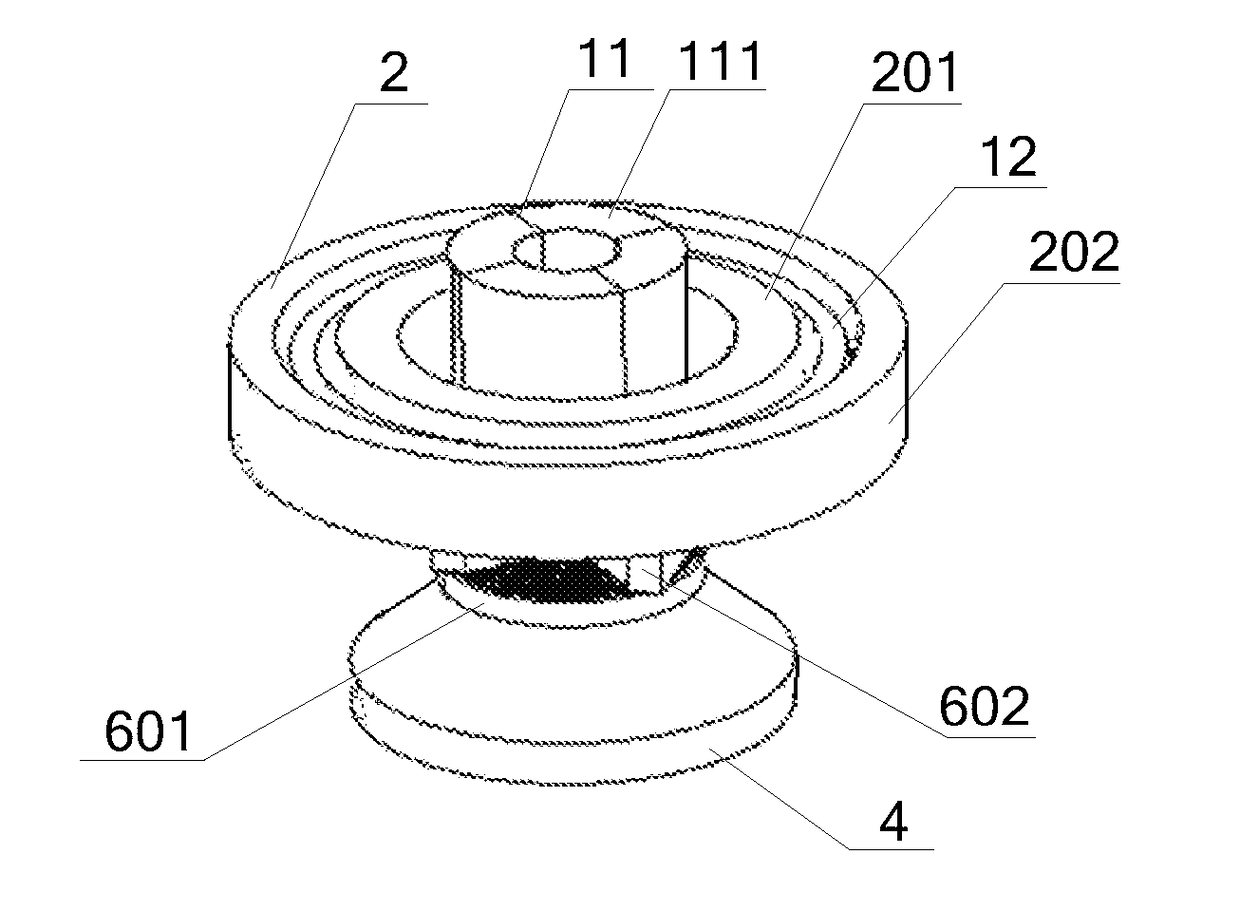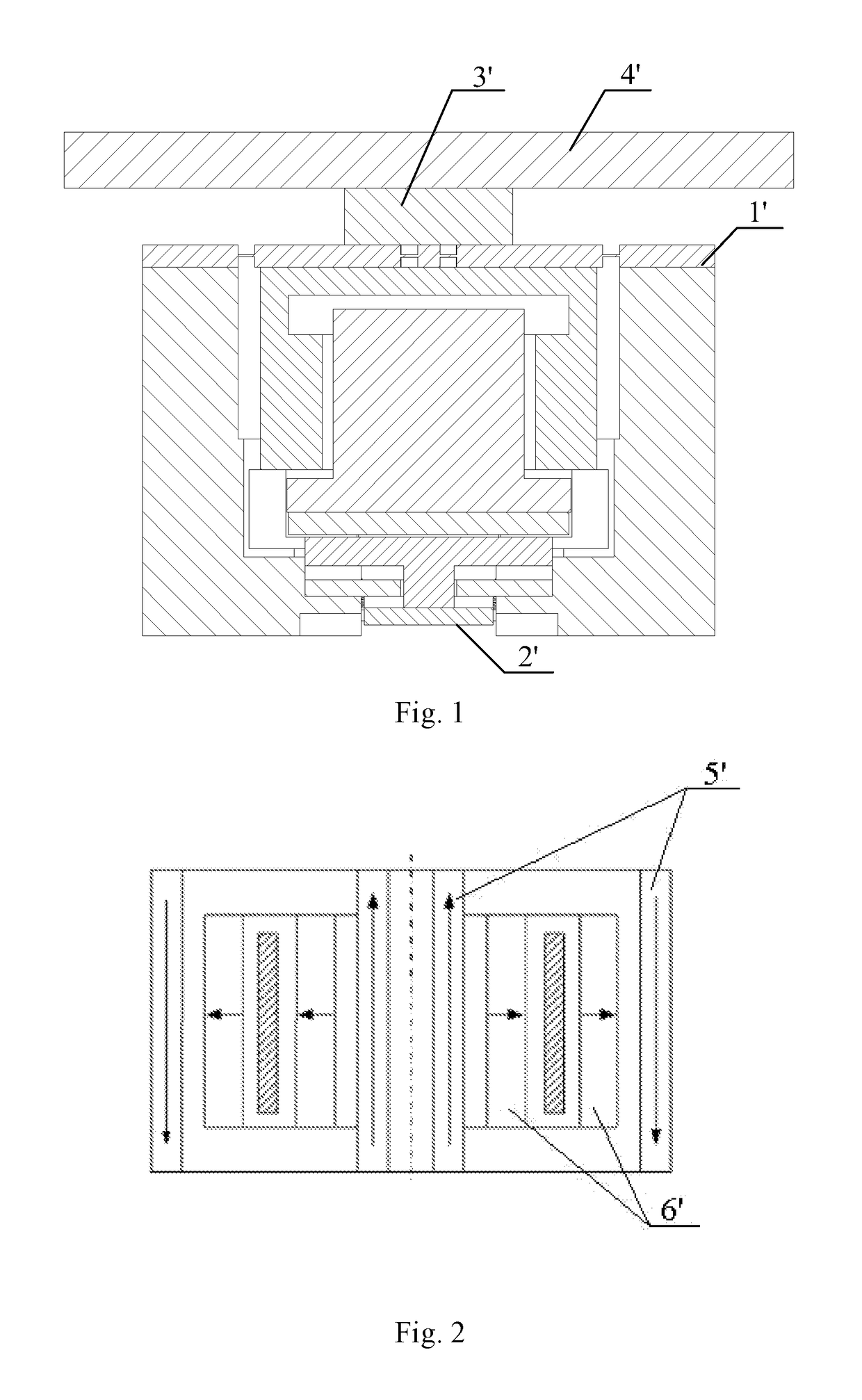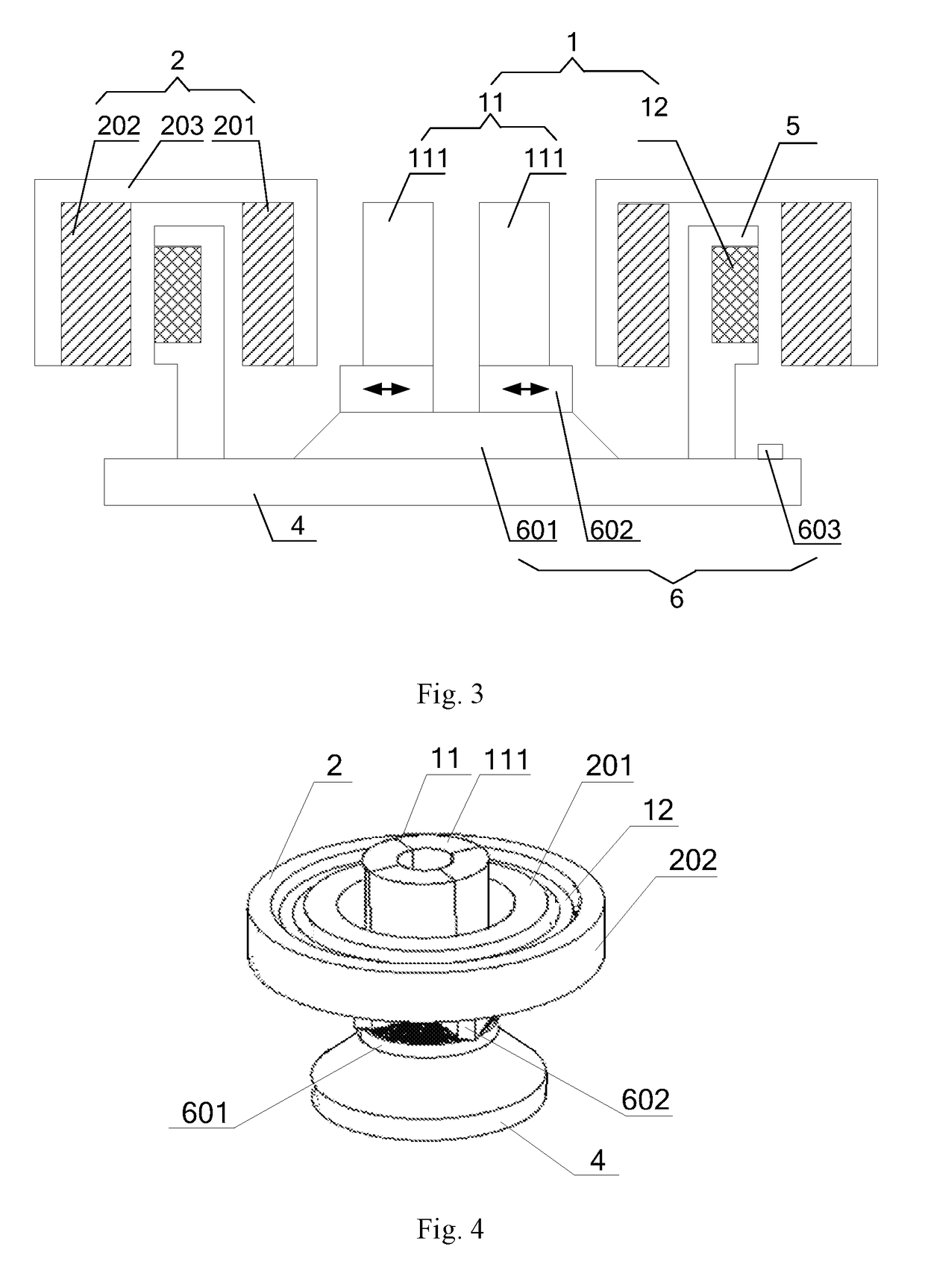Adjustable magnetic buoyancy gravity compensator
a compensator and magnetic buoyancy technology, applied in the direction of magnetic circuit rotating parts, instruments, magnetic circuit shape/form/construction, etc., can solve the problems of high structural complexity, difficult to equalize the gravitational load among, and high stiffness requirements, and achieve the effect of widening the range of adjustmen
- Summary
- Abstract
- Description
- Claims
- Application Information
AI Technical Summary
Benefits of technology
Problems solved by technology
Method used
Image
Examples
embodiment 1
[0033]As shown in FIG. 3, an adjustable magnetic gravity compensator according to this embodiment includes a stator 1, a rotor 2, a base 4 and an adjustment mechanism 6. The stator is disposed on the base 4, and the rotor 2 is magnetically levitated with respect to the stator 1. The stator 1 includes a coil of a voice coil motor 12 and a central cylindrical magnet 11. The coil 12 is fixed to the base 4 by a coil frame 5, and the central cylindrical magnet 11 consists of at least two arc magnets 111 each magnetized along an axis of the central cylindrical magnet 11. The arc magnets cooperate with the rotor 2 to provide a stable and less stiff basic levitation force. The adjustment mechanism 6 is secured to the base 4 at the bottom and is fixedly connected to the arc magnets 111 at the top so that it can drive the arc magnets 111 to move inward and outward concentrically, i.e., radially with respect to a center of the central cylindrical magnet 11. The rotor 2 is magnetized radially. ...
embodiment 2
[0039]As shown in FIG. 9, this embodiment differs from Embodiment 1 in that, in the adjustment mechanism 6 according to this embodiment, the driver 601 is a frustum, with the followers 602 being wedge-shaped blocks corresponding to the frustum. The adjuster 603 is disposed on the base 4, and when it is rotated, the frustum is caused to move upward or downward, driving the followers 602 and the arc magnets 111 to move inward and outward concentrically. The close fit between the frustum and the wedges allows a higher adjustment accuracy.
embodiment 3
[0040]As shown in FIG. 10, this embodiment differs from Embodiments 1 and 2 in that, in the adjustment mechanism 6 according to this embodiment, the driver 601 is a cylindrical base with a central protrusion while the followers 602 are slide blocks. They are articulated together with movable hinges 604. The adjuster 603 includes an adjusting nut 6031 and a screw rod 6032 engaged with the adjusting nut 6031. The screw rod 6032 is provided inside the cylindrical base and is connected to the movable hinges 604 and the base 4 at the top and bottom, respectively. The engagement between the adjusting nut 6031 and the screw rod 6032 allows a higher adjustment flexibility.
PUM
 Login to View More
Login to View More Abstract
Description
Claims
Application Information
 Login to View More
Login to View More - R&D
- Intellectual Property
- Life Sciences
- Materials
- Tech Scout
- Unparalleled Data Quality
- Higher Quality Content
- 60% Fewer Hallucinations
Browse by: Latest US Patents, China's latest patents, Technical Efficacy Thesaurus, Application Domain, Technology Topic, Popular Technical Reports.
© 2025 PatSnap. All rights reserved.Legal|Privacy policy|Modern Slavery Act Transparency Statement|Sitemap|About US| Contact US: help@patsnap.com



